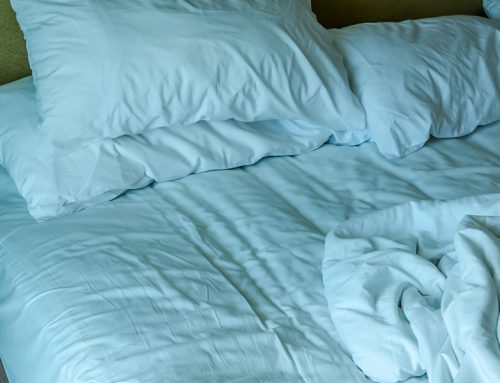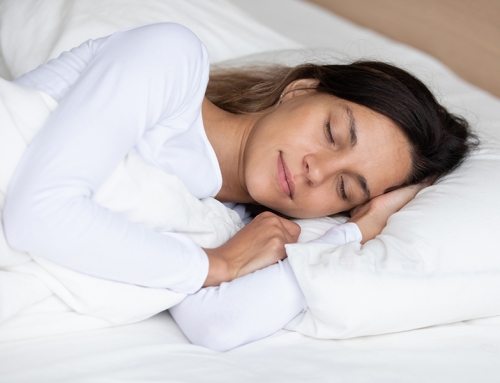So you’re worried about bed bugs in your mattress?
Let’s first start by de-bunking two bed bug myths…
How can I identify bed bugs in my mattress?
Bed bugs are wingless insects that feed on human blood. At their full adult size, they are about the size of an apple seed (5-7 mm long). If they are not recently fed, they will look more long, flat and with an oval shaped body. If they are well fed, they are more pronounced, reddish-brown and chubby. If your sense of smell is good, you may also be able to tune into a musty, sweet odor that bed bugs produce.
 Usually, the first sign of bed bugs is when you notice bites on your own skin when you wake up. Examine your skin for small bites that are itchy, red and puffy. Notice if you have bites in a consistent circle or curve, but be wary as they can give isolated bites as well.
Usually, the first sign of bed bugs is when you notice bites on your own skin when you wake up. Examine your skin for small bites that are itchy, red and puffy. Notice if you have bites in a consistent circle or curve, but be wary as they can give isolated bites as well.
Then get right to your bedroom and start playing detective. Look all over your bed, frame, floor, headboard and walls surrounding. Search closely for dark coloured spots, smears and of course, the bugs themselves.
Believe it or not, it is possible to spot most bed bugs with our naked eyes. Once they are older than 5 days and well fed, it’s pretty easy to notice them. They’re just very inconspicuous hiders. Some of their favourite hiding spots include dark cracks, seams of mattresses, closets and headboards. So look in small corners and behind surfaces.
Bed bugs are also nocturnal. The best way to not mistake bed bugs for other insects, like fleas or mosquitos, is to actively look for them at night because that’s when they come out to feed.
Unfortunately bed bugs also reproduce quickly and in the masses; a female can lay up to 500 eggs. So when you’re scouring for bed bugs, also be on the lookout for egg shells and 1.5 mm sized babies. This is why it’s important to take action early if you learn about the presence of bed bugs in your mattress.
How can I remove bed bugs from my mattress?
Now, bed bug removal is not a quick fix but you do have to act quickly. Getting rid of bed bugs starts with your mattress then the rest of your space. Patience is necessary. If you follow these steps diligently, you’ll be on the path to a bed-bug free mattress in no time!
Should I throw out my mattress?
You might think that the ideal solution is to toss out your mattress. But with bed bugs, this isn’t necessarily the best solution. They’ll spread and cling to other parts of your room or home so getting rid of your mattress doesn’t mean you’ve depleted them entirely. They could easily be living somewhere else and cling back to a new mattress you bring in.
If you decide purchasing a new mattress is worth it, then you’ll need to be secure in knowing you’ve rid the rest of your house of bed bugs.
How can I remove bed bugs from my house?
After you have found, cleaned and isolated your mattress, next is the rest of your space. This is especially relevant if you have some clutter. This is prime real estate for bed bugs to hide, so you have to be as thorough with the rest of your home. Assess each room for signs of bed bugs then follow these steps.
Remain vigilant and tidy
 You will need to monitor and check-in with your space consistently for the next year. Bed bugs are pesky creatures that aren’t easily tamed. And no matter how much you scrub and wash, they may still turn up. So even if you think you’ve done all you can do, don’t be surprised if you spot some a few months later.
You will need to monitor and check-in with your space consistently for the next year. Bed bugs are pesky creatures that aren’t easily tamed. And no matter how much you scrub and wash, they may still turn up. So even if you think you’ve done all you can do, don’t be surprised if you spot some a few months later.
Again, the last resort is calling professional pest control companies that have tools to kill bugs upon contact and in the long-term. Because ultimately, this is a very laboring process. To prevent bed bugs from infiltrating, ensure you seal up any cracks in your house and keep your space tidy. In the future, be mindful when you return home from travelling and when purchasing second-hand items.





